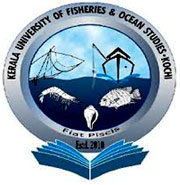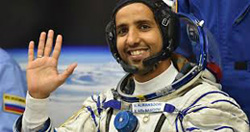October 2019 Science and Technology
Sakshi Education
- NASA To Launch Golf Cart-Sized Rover
 NASA will send a golf cart-sized robot to the moon in 2022 to search for deposits of water below the surface.
NASA will send a golf cart-sized robot to the moon in 2022 to search for deposits of water below the surface.
This is an effort to evaluate the vital resource ahead of a planned human return to the moon in 2024 to possibly use it for astronauts to drink and to make rocket fuel,
The VIPER robot stands for Volatiles Investigating Polar Exploration Rover.
- US Air Force space plane back on Earth after two-year mission
The US Air Force's mystery space plane is back on Earth, after 780 days in orbit following a record-breaking two-year mission.
The X-37B landed at Kennedy Space Centre of National Aeronautics and Space Administration in Florida early Sunday. The Air Force is mum about what the plane did in orbit after launching aboard a SpaceX rocket in 2017.
The mission sets a new endurance record for the reusable test vehicle. US officials said that this latest mission has successfully completed its objectives. This was the fifth spaceflight by a vehicle of this sort. No. 6 is planned next year with another launch from Cape Canaveral.
- New technology to capture carbon dioxide
Researchers from the Massachusetts Institute of Technology (MIT) in the US have developed a new technology to capture carbon dioxide from a stream of air, virtually at any concentration level.
This may pave the way for new strategies to reduce atmospheric greenhouse gas levels.
The new method could take out the gas even when it was present in very low concentrations.
- Russia’s Submarine test fired Missile
Russia’s Knyaz Vladimir submarine of Borei-class vessel, test-fired its most advanced nuclear- powered missile named, Bulava intercontinental ballistic missile.
It precisely hit the target range of 1000 km away in the Russian region of Kamchatka.
The launch was conducted in the white sea of the northwest coast of Russia with a dummy payload.
- ISRO to attempt second soft landing soon
Chandrayaan-2 is not the end of India’s attempts to conquer the moon and the country’s space agency will demonstrate a successful soft landing in the near future, said Indian Space Research Organization (ISRO) chief Dr K Sivan.
The noted aerospace scientist was in the national capital as the chief guest at the 50th Convocation of the Indian Institute of Technology (IIT), Delhi.
Chandrayaan-2, India's second mission to the moon was launched on July 22, but failed to manage a soft landing on the moon, which would have been the country’s first.
The space agency is also working on connecting Navik Signals to cellphones to develop several related applications needs. The testing of 200 tonne semi-cryogenic engine, to power ISRO's Reusable Launch Vehicle, is also expected to begin soon.
Urging students to take risks, he said, though ISRO faced failures while developing its own launch vehicles, it has managed to reach Mars and the Moon.
ISRO signed a Member of Understanding (MoU) with IIT Delhi to set up ISRO Space Technology Cell at the campus and work on focused research projects in space technology. A commemorative stamp was also launched to mark the occasion.
- IIT Delhi and ISRO to set up space cell
The IIT Delhi will set up a space technology cell in collaboration with the Indian Space Research Organization (ISRO).
This collaboration is to contribute to the space technology research areas such as AI (Artificial Intelligence), nanotechnology, functional textiles, smart manufacturing at its campus. It is also proposed that IIT, Delhi as an Institute becomes an academic partner of ISRO.
- NASA unveils space-suit for Moon mission
 NASA has unveiled its next-generation space-suits for upcoming Artemis programme. Artemis is scheduled to launch by 2024. It will be NASA’s first woman mission on the Moon.
NASA has unveiled its next-generation space-suits for upcoming Artemis programme. Artemis is scheduled to launch by 2024. It will be NASA’s first woman mission on the Moon.
This space-suit will be more flexible and easy to wear, NASA reported.
NASA announced that it will allow astronauts to squat to pick up rocks and move more easily.
- Mars once had salt lakes
Mars once had salt lakes similar to those on the Earth, according to a study which indicates that its climate 'dried out' over a long time.
The study was published in the journal Nature Geoscience.
It noted that over 3 billion years ago the lake that was present in Gale Crater underwent a drying episode.
The Gale Crater formed about 3.6 billion years ago when a meteor hit Mars.
- Scientists discover new fish species
 A research team led by Kerala University of Fisheries and Ocean Studies (Kufos) has discovered a unique species of miniature well- dwelling subterranean fish from Kozhikode.
A research team led by Kerala University of Fisheries and Ocean Studies (Kufos) has discovered a unique species of miniature well- dwelling subterranean fish from Kozhikode.
The new species has been named 'Pangio bhujia'.
It is the first species of eel-loach in the world that has been discovered to be living in subterranean environments.
- ‘mHariyali Mobile App’ launched by MoHUA
Minister of State for Housing & Urban Affairs Hardeep S Puri launched a mobile App, 'mHariyali', which is aimed to encourage public engagement in planting trees and other such green drives.
The App provides for automatic geotagging of plants.
This app will also enable nodal officers to periodically monitor the plantation.
The App is user-friendly and works on any android mobile phone.
- India’s first 5G powered ‘connected music’
Ericsson and Airtel enabled a 5G powered Connected Music performance during the inauguration of the India Mobile Congress (IMC) 2019.
A first for India, the show involved connecting two parts of a musical performance using a live 5G network and presenting it as one, for live audiences at both locations.
The ultra-low latency of the 5G network powered the connected music showcase at the IMC.
- DPIIT launches website, mobile app for IPR
Secretary Department for Promotion of Industry and Internal Trade (DPIIT) Guruprasad Mohapatra launched the website and mobile application L2Pro India (Learn to Protect, Secure and Maximize Your Innovation) on Intellectual Property Rights (IPRs).
The website and app will be very useful to the startup community which holds great promise for India and its economy.
- Scientists discovered the worlds fastest ant
Scientists have discovered the world’s fastest ant which runs at speeds equivalent of 360mph in humans.
The Saharan silver ant, named after where it lives, can put in 50 strides a second, covering a distance of nearly a metre (85.5cm).
The length of their strides quadrupled from 4.7mm to 20.8mm as their speed accelerated, according to a paper published in the Journal of Experimental Biology.
- First UAE astronaut returned safely
 NASA astronaut Nick Hague and Soyuz Commander Alexey Ovchinin of the Russian space agency Roscosmos and visiting astronaut Hazzaa Ali Almansoori from the United Arab Emirates (UAE) safely returned to the Earth on 4th October 2019 after an eight-day stay.
NASA astronaut Nick Hague and Soyuz Commander Alexey Ovchinin of the Russian space agency Roscosmos and visiting astronaut Hazzaa Ali Almansoori from the United Arab Emirates (UAE) safely returned to the Earth on 4th October 2019 after an eight-day stay.
The crew landed safely in Kazakhstan.
On 14 March Hague and Ovchinin along with NASA astronaut Christina Koch started their mission to ISS.
- DNA barcoding of spiders in India
Scientists from the Zoological Survey of India undertook a barcode of at least 100 species of spiders based on their DNA.
It is the largest exercise on DNA barcoding of spiders from India.
DNA barcoding is a method used to quickly identify any species based on extracting a DNA sequence from a tiny tissue sample of any organism.
- NASA –Launches long- delayed icon space weather satelite to study earth’s lonosphere
The Ionospheric Connection Explorer (ICON) spacecraft launched aboard a Northrop Grumman Pegasus XL rocket, which was released in midair from its carrier plane, a Stargazer L-1011.
The aircraft had taken off about an hour and a half earlier from Cape Canaveral Air Force Station.
ICON make its way to Earth orbit on a mission to study the planet's ionosphere, a massive layer of our atmosphere that overlaps with the boundary of space.
The spacecraft's measurements will help scientists better understand the link between space weather and terrestrial weather, and how the two interact in the ionosphere, mission team members
The ionosphere is continually changing, and it's very dynamic,"Nicky Fox, head of NASA's heliophysics division, explained during a prelaunch news briefing on Tuesday (Oct. 8).
- NASA launches miniature satellite
 The National Aeronautics and Space Administration (NASA) has launched a miniature satellite designed by Aabhaas Sikka from NASA's Columbia Scientific Balloon Facility.
The National Aeronautics and Space Administration (NASA) has launched a miniature satellite designed by Aabhaas Sikka from NASA's Columbia Scientific Balloon Facility.
The satellite is named 'RamanSat 2' and measures 4 cm x 4 cm x 4 cm.
The satellite is made to measure radiation from the sun and space reaching the Earth.
- BrahMos Supersonic Cruise Missile with major indigenous systems successfully test-fired
BrahMos supersonic cruise missile featuring Indian propulsion system, airframe, power supply and other major indigenous components successfully test-fired at 10.20 AM on 30 September, 2019 from ITR, Chandipur in Odisha.
The missile was successfully test-fired for its full range of 290-km during the launch jointly conducted by DRDO and BrahMos Aerospace.
The indigenous content in the formidable weapon has reached a high value, thus bolstering India’s defence indigenization and the flagship ‘Make in India’ programme.
Dr. G. Satheesh Reddy and DG, Missiles and Strategic Systems Shri MSR Prasad also congratulated for the successful launch.
DG (BrahMos) Dr Sudhir Kumar Mishra, Director DRDL Dr Dashrath Ram and Dr BK Das Director ITR coordinated and witnessed the entire mission at the launch site and termed the successful flight test as a landmark achievement in enhancing India’s “Make in India” capabilities. They jointly developed by India and Russia, the versatile BRAHMOS has been operationalized in the Indian Armed Forces with all the three services.
The life extension test firing of BRAHMOS was conducted from a Static Inclined Launcher proving the efficacy and longevity of the system which was witnessed by scientists.
- Submarine-launched missile test successful - North Korea
North Korea’s test-firing of a new submarine-launched ballistic missile in the waters off its east coast was successful.
The test-firing was North Korea’s first of a submarine-launched missile in three years, which occurred ahead of a restart of nuclear negotiations between North Korea and the United States this weekend.
The report did not elaborate on whether the missile was fired from a submarine, a barge or other underwater launch platform.
The Korean Central News Agency said the test of the Pukguksong-3 missile ushered in a new phase in containing the outside forces’ threat to North Korea.
KCNA said that the missile was launched in a vertical mode and that its test had no adverse impact on the security of neighbouring countries.
- CMFRI teamed up with ISRO
A mobile app has been developed to collect the complete datasets on smaller wetlands across the coastal region of India.
The app was developed by the Space Applications Centre (SAC) of the ISRO upon the request of the Central Marine Fisheries Research Institute (CMFRI). The mobile app is aimed to generate a centralised digital database of the smaller wetlands (2.2 ha) across the country.
- World Space Week: October 4-10 (gk)
World Space Week is an international celebration of science and technology, and their contribution to the betterment of the human condition.
The United Nations General Assembly declared in 1999 that World Space Week will be held each year from October 4-10.
The theme of World Space Week 2019 is ''The Moon: Gateway to the Stars".
- Digital Gandhi Gyan-Vigyan inaugurated
Secretary, Department of Science & Technology, Prof. Ashutosh Sharma inaugurated an exhibition titled Digital Gandhi Gyan Vigyan Exhibition.
The exhibition has been organised in collaboration with a technology start-up under incubation by IIT, namely, M/s Vizara Technologies Pvt. Ltd.
The Dept has also engaged IIT Gandhinagar for organising a workshop for children on 3 and4 Oct 2019.
- NASA sets first all-female spacewalk
The first all-female spacewalk is back on, six months after a suit-sizing flap led to an embarrassing cancellation.
NASA announced on October 4 that the International Space Station’s two women will pair up for a spacewalk later this month. Astronauts Christina Koch and the newly arrived Jessica Meir will venture out Oct.
21 to plug in new, upgraded batteries for the solar power system.
It will be the fourth of five spacewalks for battery work. The first is on October 6; Koch will go out with Andrew Morgan. Koch was supposed to do a spacewalk with another female crewmate in March.
But NASA had to scrap the plan just a few days in advance because there wasn’t enough time to get a second medium-size spacesuit ready.
The second medium was put together on board in June.
NASA’s deputy chief astronaut Megan McArthur told reporters the all-female spacewalk will be a milestone. But she noted that women are so integrated at all levels at NASA now that they don’t tend to dwell on gender.
Published date : 09 Oct 2019 04:14PM


















